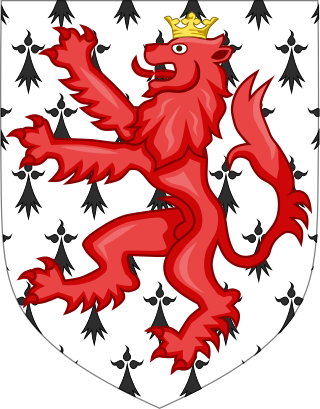
Exeter Cathedral, properly known as the Cathedral Church of Saint Peter in Exeter, is an Anglican cathedral, and the seat of the Bishop of Exeter, in the city of Exeter, Devon, in South West England. The present building was complete by about 1400, and has several notable features, including an early set of misericords, an astronomical clock and the longest uninterrupted medieval stone vaulted ceiling in the world.
Lawrence Saunders was an English Protestant martyr whose story is recorded in Foxe's Book of Martyrs.

Rowland Taylor was an English Protestant martyr during the Marian Persecutions.

Livery Dole in Exeter, Devon, is an ancient triangular site between what is today Heavitree Road and Magdalen Road, in the eastern suburbs of Exeter. It was most notoriously used as a place for executions, and has contained an almshouse and chapel since 1591.
The Ipswich Martyrs were nine people burnt at the stake for their Lollard or Protestant beliefs around 1515-1558. The executions were mainly carried out in the centre of Ipswich, Suffolk on The Cornhill, the square in front of Ipswich Town Hall. At that time the remains of the medieval church of St Mildred were used for the town's Moot Hall. Later, in 1645 Widow Lakeland was executed on the same site on the orders of Matthew Hopkins, the notorious Witchfinder General.

George Marsh was an English Protestant martyr who died in Boughton, Chester, on 24 April 1555 as a result of the Marian Persecutions carried out against Protestant Reformers and other dissenters during the reign of Mary I of England. His death is recorded in Foxe's Book of Martyrs.

Agnes Prest was a Cornish Protestant martyr from the reign of the Catholic Queen Mary. She was burned at the stake at Southernhay in Exeter in 1557.
Rowland Meyrick (Merrick) (1505–1566) was a Welsh bishop of Bangor.

James Turberville was an English cleric who served as Bishop of Exeter from 1555 to 1559.
William Chedsey (1510?–1574?) was an English Roman Catholic priest and academic, who became archdeacon of Middlesex in 1556 and President of Corpus Christi College, Oxford in 1558.

The Colchester Martyrs were 16th-century English Protestant martyrs. They were executed for heresy in Colchester, Essex, during the reigns of Henry VIII and Mary I. Their story is recorded in Foxe's Book of Martyrs.
The Canterbury Martyrs were 16th-century English Protestant martyrs. They were executed for heresy in Canterbury, Kent, and were the last Protestants burnt during the reign of Mary I. Their story is recorded in Foxe's Book of Martyrs.

The Stratford Martyrs were eleven men and two women who were burned at the stake together for their Protestant beliefs, either at Stratford-le-Bow, Middlesex or Stratford, Essex, both near London, on 27 June 1556 during the Marian persecutions.

Holcombe Burnell is a civil parish in Devon, England, the church of which is about 4 miles west of Exeter City centre. There is no village clustered around the church, rather the nearest village within the parish is Longdown. Only the manor house and two cottages are situated next to the church. The former manor house next to the church is today known as Holcombe Burnell Barton having subsequently been used as a farmhouse. The manor was in the historical Hundred of Wonford.

Sir Thomas Denys of Holcombe Burnell, near Exeter, Devon, was a prominent lawyer who served as Sheriff of Devon nine times between 1507/8 to 1553/4 and as MP for Devon. He acquired large estates in Devon at the Dissolution of the Monasteries.
Robert Pakington was a London merchant and Member of Parliament. He was murdered with a handgun in London in 1536, likely the first such killing in the city. His murder was later interpreted as martyrdom, and recounted in John Foxe's Acts and Monuments. He was the grandfather of Queen Elizabeth I's favourite, Sir John "Lusty" Pakington.

Sir Robert Dennis, JP of Holcombe Burnell in Devon, was a Member of Parliament for Devon in 1555 and served as Sheriff of Devon.

The Stratford Martyrs Memorial is a memorial that commemorates the group of 11 men and two women who were burned at the stake together for their Protestant beliefs, at Stratford-le-Bow or Stratford near London in England on 27 June 1556, during the Marian persecutions.













